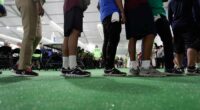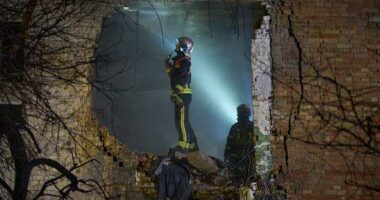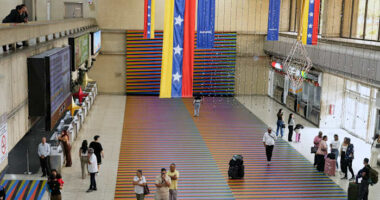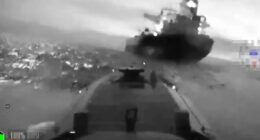Share this @internewscast.com
SAN FRANCISCO (KRON) — Tesla is facing two new lawsuits this week, alleging that the company’s Cybertrucks become dangerous infernos in crashes. The lawsuits claim that Tesla has not addressed technical issues with their electronic doors, despite an increasing number of deaths.
The first wrongful death lawsuit was brought by lawyers on behalf of the family of Krysta Michelle Tsukahara, a 19-year-old college student who perished in a fiery Cybertruck accident in Piedmont, California. A second similar lawsuit was also filed Thursday for 20-year-old Jack Nelson, another victim who was sitting beside Tsukahara in the backseat.
According to the lawsuit for Nelson, filed in Alameda County Superior Court, “This case is about serious design flaws in the Tesla Cybertruck that made a potentially survivable crash into a deadly blaze. Jack survived the initial crash with only minor injuries.”

On November 27, 2024, Tsukahara, Nelson, and two other college students were trapped inside a rapidly burning Cybertruck. Among them, Soren Dixon, Nelson, and Tsukahara lost their lives. A passerby managed to rescue one student by breaking a bulletproof window with a tree branch.
The tragedy happened while the friends were back home in Piedmont for Thanksgiving break.
The good Samaritan reported that Tsukahara attempted to move from the backseat to the front to escape through the shattered front passenger window. “I reached for her arm to pull her towards safety, but she withdrew due to the flames,” the witness recounted to California Highway Patrol officers.

Lawyers stated that Tsukahara was fully conscious and aware of her perilous situation. “She couldn’t open the door because of an electrical malfunction, and the passerby trying to help her couldn’t either,” the lawsuit asserts.
After the collision, but before her death, Tsukahara suffered “unimaginable pain and emotional distress as she suffered from flames which consumed her,” attorneys wrote.
The Nelson lawsuit explains that the Cybertruck’s doors depended on electronic buttons located inside the cabin and on the exterior pillar.
“Those buttons failed after the crash, whether due to loss of power or other damage. Because the Cybertruck lacked exterior mechanical handles, no rescuer could open the right rear door from the outside. Inside, Tesla provided a mechanical backup release, but it was concealed beneath the map pocket liner at the bottom of the door not feasible to find or use in the smoke, heat and chaos of a post-crash fire,” the Nelson suit states.

Tesla compounded dangerous door designs by building Cybertrucks with stainless steel “exoskeletons” and “armor glass,” material meant to be extraordinarily resistant to intrusion, the suit states. The same features that repel bullets also make it nearly impossible for crash victims to break a window to escape, or for rescuers to force entry.
Nelson, Tsukahara, and Dixon were all recent graduates of Piedmont High School.
On Friday, Nelson’s parents wrote in a statement, “The four young people in the Cybertruck were close friends and outstanding individuals, each on the verge of making meaningful contributions to the world. They were all victims of Tesla’s unsafe design. The impact has been felt not only in Piedmont but also far beyond including at the University of Colorado Boulder, where Jack was a student and is deeply mourned.”
His obituary states, “Jack was an exceptional athlete, loved the outdoors and adventure. More than anything, Jack cared greatly for people, was a loving and fiercely loyal friend, and had a strong faith.”

Nelson’s parents, Todd and Stannye Nelson, said they are seeking to hold Tesla accountable.
Tsukahara was a top student at Savannah College of Arts and Design, where she was majoring in fashion design. She had a creative eye towards aesthetics, style, fashion, as well as “a bright and shining light that can never be dimmed,” her obituary states.
Tsukahara’s attorneys pointed out that Tesla’s original Model S had interior front door handles that combined an electronic and mechanical latch. When the car had power, pulling the handle opened the door electronically; when power was lost, pulling the same handle opened the door mechanically.

However within the past decade, Tesla designed, manufactured, and sold high-tech vehicles without intuitive mechanical door handles that an average person can quickly figure out under stress, attorneys claim.
“Tesla’s history of defective door handles is particularly egregious because they knew from the outset how to design a system that avoided the hazard of power-loss entrapment,” the Tsukahara lawsuit states.
Attorneys argue that Tesla has been “on notice” for years about its door design defects. Tesla customers and first-responders have warned the company of “exactly the hazard that killed Krysta Michelle Tsukahara: rear passengers unable to escape or be rescued following a collision, when electronic door systems failed due to power loss or other crash damage,” the Tsukahara lawsuit states.
Attorneys wrote in the Nelson lawsuit, “Jack Nelson did not die from the crash; he died because Tesla’s design left him with no practical means of escape.”
Tesla did not respond to KRON4’s request for comment.
Nelson’s parents are represented by the law firm Walkup, Melodia, Kelly & Schoenberger. Tsukahara’s parents are represented by Dreyer Babich Buccola Wood Campora law firm.
The Tsukahara suit includes dozens of incidents documenting Tesla passengers and drivers who were victims of electric door entrapment and fires, including:
- In Ft. Lauderdale, Florida, on May 8, 2018, two 18-year-old high school students were unable to open the doors of their Tesla Model S after it crashed and burst into flames. The two trapped teenagers died, while a third teenager was ejected from Tesla and survived.
- In Leesburg, Virginia, on December 9, 2023, an off-duty firefighter was not able to open a Tesla Model Y’s doors after it crashed, trapped two people inside, and caught fire. The firefighter smashed the driver’s window and reached inside for the manual release, burning himself. “I’m trying to open the door and it’s like, ‘what the hell, where is the backup thing?'” he is quoted in the suit. While he was able to pull the driver out through the window, he could not get the passenger out. By the time hydraulic cutters arrived, the passenger had third-degree burns on her face. The firefighter said, “It’s the most horrible thing, to see a human burning. . . if I was able to open the doors, I could have gotten them both out.”
- A driver in Golden, Colorado, reported to NHTSA on June 29, 2022, that after swerving to avoid a truck, their 2019 Tesla Model 3 shut down. They were stuck in the middle of the road, the Tesla’s hazard lights did not work, and the air conditioning shut off. The doors and windows also stopped working, leaving the driver and their five-year-old trapped, with outside temperatures around 100 degrees. Tesla Roadside serve agents refused to assist because the car was not in the driver’s name, the suit claims. “My 5-year-old daughter and I could have died either of suffocation or by collision,” the driver is quoted in the lawsuit.










